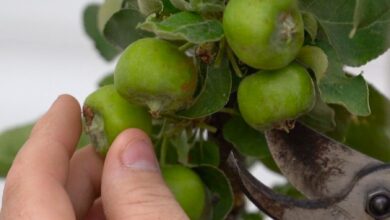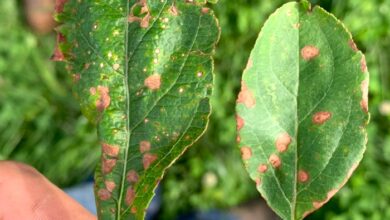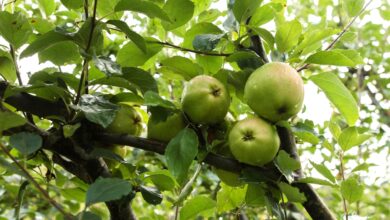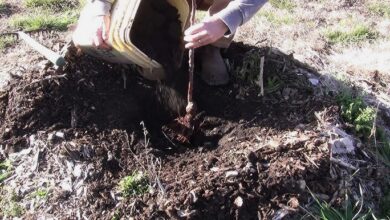Apple Tree Root Rot: What Causes Root Rot İn Apple Trees?
Can You Save An Apple Tree From Root Rot?
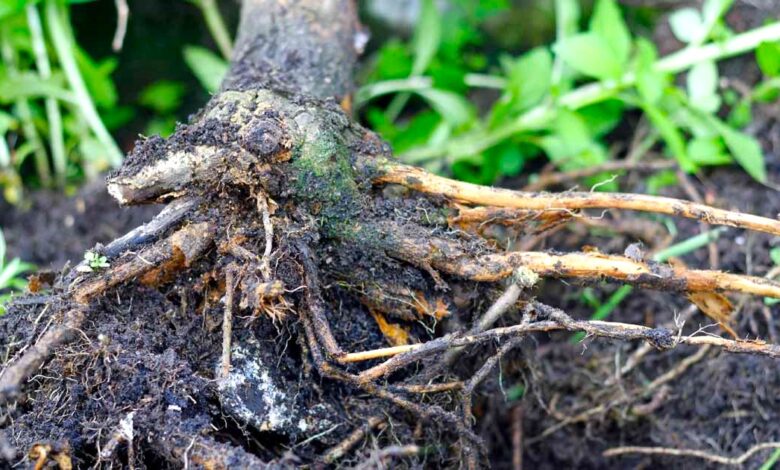
We love apples and it’s a pleasure, though not without its difficulties, to grow your own. Phytophthora collar rot, sometimes referred to as crown rot or collar rot, is one disease that commonly affects apples. All stone and pome fruit species are susceptible to fruit tree root rot, which typically occurs between the ages of three and eight when the trees are at their peak fruit-bearing potential. What signs of apple tree root rot are present, and can Phytophthora be used to treat them?
Symptoms of Apple Tree Root Rot
Pears are also susceptible to crown rot, a disease of the apple tree’s roots brought on by Phytophthora cactorum. The disease is more likely to affect some rootstocks than others, with dwarf rootstocks being especially at risk. It is commonly observed in low-lying regions where the soil drains poorly. Apple trees with root rot show delayed bud break, discolored leaves, and twig dieback in the spring. A girdling of the trunk, with the bark turning brown and slimy when wet, is the most obvious symptom of apple tree root rot. Examining the roots would reveal water-soaked necrotic tissue at the root’s base. Usually, this necrotic region reaches up into the graft union.
The Cycle of Phytophthora Apple Root Rot Disease
Fruit tree root rot is caused by this fungus, which can persist in the soil as spores for many years. To varied degrees, these spores are resistant to chemicals and drought. Fungal growth is encouraged by cool temperatures of about 56 degrees Fahrenheit (13 degrees Celsius) and abundant rainfall. Because of this, fruit tree rot is most common in April during blossom season and in September when dormancy begins. Collar rot, crown rot, and root rot are other names for phytopthora disease, and they all relate to different areas of infection. Root rot is characterized as an infection of the root system, crown rot as an infection of the lower trunk and root base, and collar rot as an infection above the tree union.
Apple Phytophthora Treatment
Choose your rootstock carefully because this disease is hard to control and it’s usually too late to treat once it’s infected. Although no rootstock is impervious to crown rot, steer clear of dwarf apple rootstocks as they are particularly susceptible. Apple trees of the following typical size exhibit good to moderate disease resistance: Duchess Golden Delicious and Lodi Grimes Golden. Wealthy, Winesap, Red Delicious, Jonathan McIntosh, and Rome Beauty.
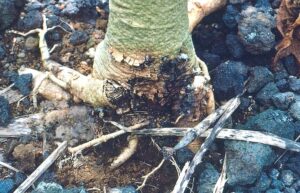
Another crucial element in the fight against fruit tree root rot is site selection. If at all possible, plant trees in raised beds; if not, divert water away from the trunk. Steer clear of planting the tree with the graft union in places with heavy, poorly draining soil or below the soil line. Young trees should be staked or supported. They may rock back and forth in windy conditions, which can lead to a well forming around the tree and collecting water, which can cause collar rot and cold injury. There aren’t many options for treatment if the tree is already infected. To reveal the afflicted area, you can, nevertheless, remove the dirt from the base of infected trees. Expose this area to air and let it dry naturally. Drying could aid in halting additional infection.
Apply two to three tablespoons (30–44 ml) of fixed copper fungicide per gallon (4 L.) of water to the lower trunk. Add fresh soil to the surrounding area late in the fall, once the trunk has dried out. Lastly, when temperatures are mild, between 60 and 70 degrees Fahrenheit (16 and 21 degrees Celsius), cut back on the frequency and length of irrigation, particularly if the soil seems to be saturated for prolonged periods of time. This invites Phytophthora fungal disease.

